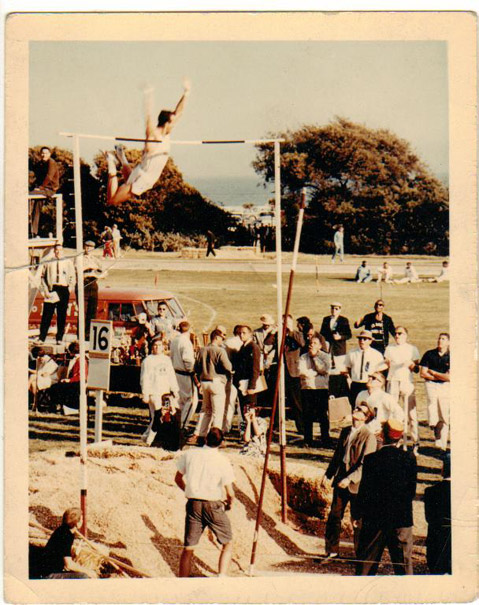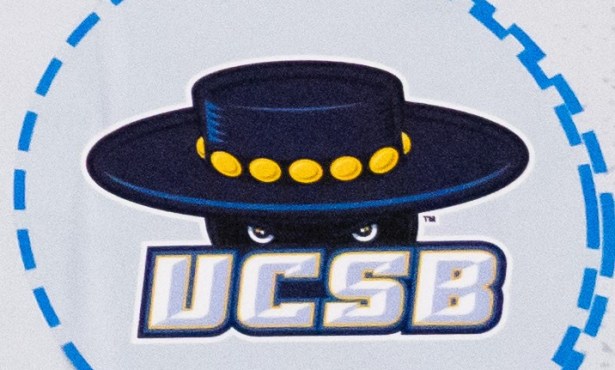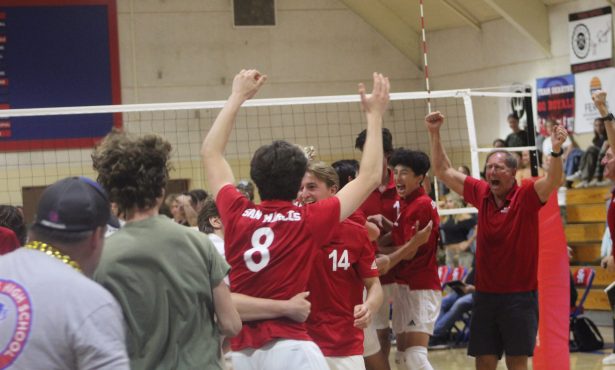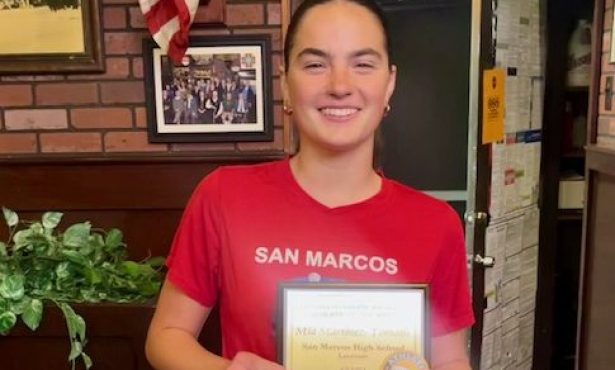John Uelses
Flying Daredevil of Track and Field

Two currents converged to make John Uelses an American hero in 1962. Mankind was venturing into outer space, and the sport of track and field was at a peak of popularity.
Pole-vaulters were the flying daredevils of track and field. They sought to find how high a human being can propel himself off the ground with nothing but a stick. It required a rare sum of athletic attributes — the speed of a sprinter, the upper-body strength of a wrestler, the agility of a gymnast, and a damn-the-torpedoes attitude.
Technology significantly entered the mix in the early ’60s. Vaulting poles had heretofore been composed of bamboo or steel. Using the latter, Don “Tarzan” Bragg had raised the world record to 15′9¼″ and won the gold medal at the Rome Olympics. But in their attempts to reach 16 feet, Bragg and his contemporaries were frustrated. Unlike the four-minute mile or the seven-foot-high jump, the pole-vaulters’ barrier remained elusive.
Uelses was a Florida high school pole vault champion. He received a track scholarship to Alabama, but he left the school because “all they cared about was football. I needed to go where the big competition was.” He joined the Marines and found his way to Quantico, Virginia, where a track-and-field team was assembled to promote the Marine Corps at meets around the country.
It was at Quantico that Uelses and his fellow vaulters began experimenting with a new kind of pole, made of fiberglass. “They just kept showing up,” Uelses said. “We’d take them and put them between two things. If they’d break, we wouldn’t mess with that company any more. Those that held up, we used.”
The new poles, lighter and more flexible than steel, triggered a revolution in the sport. “The big thing about fiberglass is you could hold the pole higher and still get liftoff,” said Santa Barbara resident Steve Morris, who has been pole-vaulting for decades. (His brother Ron Morris was the silver medalist behind Bragg.) “When you hit the box with a metal pole, it’s like hitting a brick wall.”
When the indoor track-and-field circuit got under way in 1962, Uelses was ready to ride fiberglass into history. He broke the 16-foot barrier on February 2 at Madison Square Garden in New York, clearing 16′¼″. The next night in Boston, he went 16′¾″. “The Quantico newspaper said I was the first Marine to go into space,” Uelses said. “Two weeks later, John Glenn did it.”

But to be recognized as the world record holder, Uelses had to do it in an outdoor meet. He decided to travel across the country and enter the 24th annual Santa Barbara Easter Relays, joining an array of Olympic and national champions in the first major outdoor meet of the year on March 31. The community turned out to see them; the crowd at La Playa Stadium was estimated at 9,000. The meet was covered by 13 Southern California daily newspapers, the Associated Press, United Press International, and CBS.
Uelses did not disappoint. After he clinched first place in the pole vault, the bar was raised to a barrier-busting 16′¾″. Uelses missed his first attempt, but on his second, he went over cleanly. He landed with a splash in the sawdust pit, and a tremendous cheer rolled out of the stands.
“It was loud and crazy,” recalled Lloyd Albright, a timer for the relay races. “How often do you see a world record? The thing I remember is that George Adams, one of the officials working the pole vault, stepped onto the track. We thought he was going to get run over.”
Uelses, a sleek and handsome dark-haired athlete, was the toast of the town. One man was unhappy with his success. “Don Bragg said it was the worst thing that ever happened to pole vaulting,” Uelses said. “I have a cartoon of me vaulting and Don Bragg sitting in the audience yelling at me: ‘You’re cheating!’” As far as Uelses is concerned, he was merely adapting to the latest technology. “Every sport has changes,” he said. “Look at swimming suits. Look at golf clubs.”
Uelses held the world record for a month before Dave Tork, another Marine, cleared 16′2″. From there, it kept going higher and higher until Sergey Bubka of Ukraine set the existing record of 20′1¾″ in 1994.
Now 74, Uelses is retired from a long military career first as a Marine then as a Navy fighter pilot and Pentagon strategist. He appropriately lives on the summit of a ridge near Escondido. “I look down to see the hawks,” he said. The pole he used to set his world record hangs in the garage. He has a collection of tools to fix things and engage in his hobby of woodworking.
He will return to La Playa Stadium as a guest of the 74th Easter Relays, held Saturday, March 24, at noon. A ceremony will take place to commemorate the 50th anniversary of the pole vault that put Santa Barbara in the news around the world.
S.B. Pole Vault Record Holders
Santa Barbara has figured prominently in pole-vaulting both on a world level — John Uelses’s barrier-breaker being the high point — and on a regional level throughout the years. Here are some highlights:
THE WORLD RECORD THAT WASN’T: At the 1935 Santa Barbara Open Track and Field Meet (later to be known as the Easter Relays), Bill Graber broke the existing world record when he cleared 14′ 5 5∕8″. The feat made headlines, but the record was never validated. The vaulters’ runway at Peabody Stadium sloped downhill, and a surveyor determined that the point where Graber’s feet left the ground was 2 7∕8 inches higher than the base of the uprights.
STACY SOARS: Another world record that did not count was Stacy Dragila’s spectacular 15′ 5″ clearance in Santa Barbara’s erstwhile Beach Vault Challenge at Leadbetter Beach on June 11, 2000. A year earlier in the same event, across the street from La Playa Stadium, Dragila became the first U.S. woman to clear 15 feet. Neither mark was recognized because the athletes used an unsanctioned board runway on the sand. Dragila won the first Olympic women’s pole vault at Sydney later in 2000.
THE RICHARDS CLAN: The Rev. Bob Richards, a two-time Olympic champion and first athlete to adorn a Wheaties box, won the Easter Relays pole vault in 1955. The “Vaulting Vicar” returned to Santa Barbara with his family during the ’80s. His sons, using fiberglass poles, surpassed his best performances. Brandon Richards was a San Marcos High graduating senior in 1985 when he set a national prep record of 18′ 2″ in an all-comers meet at Eugene, Oregon. Tom Richards competed for San Marcos and won the CIF Southern Section and State Championships in 1988 at 16′ 0″.
PREP CHAMPIONS: Bob Looney of Santa Barbara High preceded Tom Richards as a state champion. He won the 1959 title by clearing 13′ 8¾”. Other Southern Section champions from Santa Barbara included Gates Foss (S.B.) in 1953 (13′ 1″); Charles Breck (S.B.) in 1957 (13′ 11″); Dave Hamer (S.B.) in 1970 (14′ 8″); Todd Stoney (San Marcos) in 1983 (14′ 6″); and Daniel Turvey (Dos Pueblos) in 2007 (15′ 0″).
RELAYS RECORDS: The all-time best vault at the Easter Relays was 17′ 3¼”, set by USC’s Bob Seagren in 1967. He won the Olympic gold medal a year later. Chelsea Johnson, competing unattached in the college division in 2009, set the women’s record of 14′ 0″. The high school boys record is 16′ 2″ by Tom Richards in 1988. Rachel Viau (Arroyo Grande) and Shayla Balentine (Morro Bay) both set the girls record of 12′ 0″ in 2001.
4•1•1
The 74th Annual S.B. Easter Relays take place Saturday, March 24, noon at Santa Barbara City College’s La Playa Stadium.



